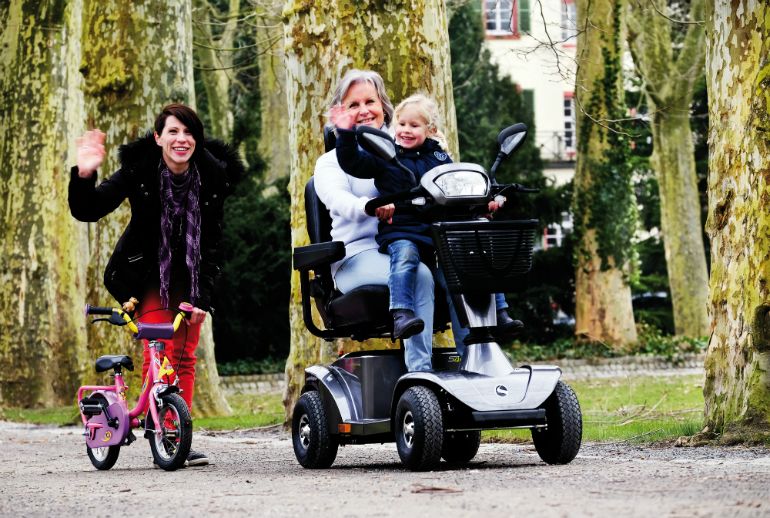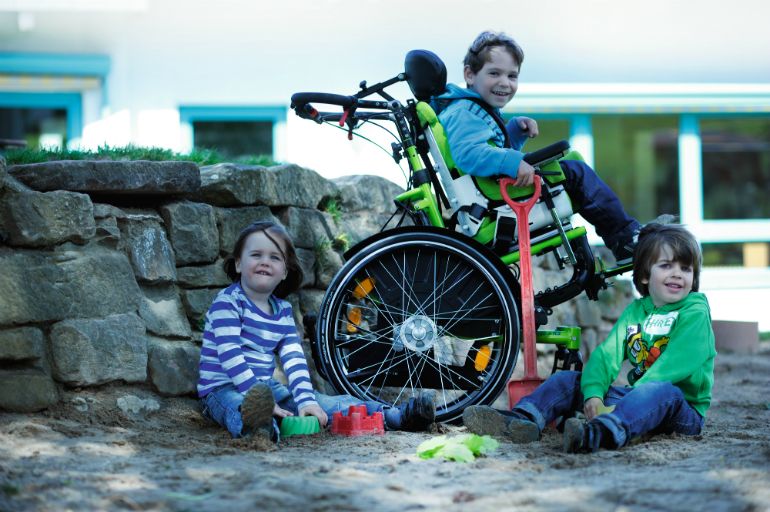As adults, it is our privilege and responsibility to teach our children about the world and the way in which it works. Some lessons seem to come more naturally than others. “Don’t touch the hotplate” and “look before you cross the road” balance readily on the tips of our tongues. Talking to children about disability seems harder, perhaps because we, too, have so much left to learn.
Ableism or Curiosity
As we open up the disability conversation with our children, it’s important to distinguish between ableism and curiosity, to re-educate and question beliefs that sustain the former while making space for the latter. Human beings are predisposed to notice difference. Whether a stranger enters the room with bright pink hair or a party guest arrives by carriage instead of car, other people and things capture our attention and pique our interest when they break the mould. Noticing difference is an important part of the human experience; uncomfortable as it might sometimes be, we don’t want to quash our children’s ability to question.
You’ve probably heard the old proverb, “curiosity killed the cat,” but did you know that the original quote included an important suffix: “but satisfaction brought it back.” Curiosity enables us to learn and develop, to improve our awareness of the world. In a society striving for growth, our children’s ability to wonder is not a deficit. In fact, by harnessing their curiosity we can promote empathy, inclusion and, ultimately, a more equitable future.

What Happens When We Shun Questions
Questions do not constitute ableism. On the contrary, they present an opportunity for the reduction of the stigma surrounding disability. Do you recall a time when you saw another person’s child point at a stranger with a visible disability, perhaps in a shopping centre or at the doctor’s office? It’s likely that you saw the child’s parent or teacher hush them, throw a furtive glance toward the target of their child’s stares, maybe even escort their child out of the vicinity. This behaviour is common but detrimental. It perpetuates a misguided association between disability and shame.
“That person is very tall,” your child says to you. You nod and agree.
“Yes, that person is very tall.”
“That person is in a wheelchair,” your child says to you.
“I’m so sorry,” you say, hurrying your child from the room. Both your child and the person with a disability about whom they are speaking have noticed your embarrassment. Disability, your child recognises, is something shameful, something to be avoided. By trying to dismiss your child’s interest in someone with a disability, you have accidentally demonstrated and therefore encouraged exclusion.
Caught up in the responsibilities and connotations that come with adulthood, you are privy to a social stigma your child knows nothing about. When we treat disability as a taboo, we inadvertently teach our children that it is one. Perhaps writer Mary Evelyn Smith put it best when in a 2017 editorial for the Huffington Post she said this: “We have to help our children to be comfortable with differences. We can’t treat disability like Voldemort.”
Tips
Recognising the importance of disability positive education is one thing. Implementing it successfully is another. Luckily, there are a few simple things we can all do to change the disability conversation and path the way for this generation as, hopefully, they become the most inclusive one yet.
- Use disability inclusive language. Children listen to the words that the adults around them use so we need to ensure that we say what we’re happy for them to repeat. Committing to using person-first language and avoiding derogatory words or phrases is a great place to start.
- Answer questions openly and honestly. We know that this world is diverse in many ways; we need to instil in our children that disability is just another form of individuality. When children ask questions, we should do our best to answer them with judgement or exclusion.
- Incorporate positive disability representation. While there’s still a long way to go, disability inclusive toys, books and television shows are beginning to enter the mainstream media. Children learn best through play (and sometimes adults do too!). These products can offer a fantastic opportunity to introduce the topic of disability for the first time in a controlled environment.
- Emphasise similarities. Kids and grown-ups alike work best when we have a good frame of reference. Encourage children to understand the ways in which they might be similar to a friend with a disability. “You like trains, I like trains!” Kids are great at finding common ground and this provides a brilliant opportunity for us to humanise disability and avoid othering stereotypes.

Why Does It Matter?
No one in this world is quite the same as anyone else, but we do share one commonality: a desire to be included and treated with respect. Disability is only scary if we let it be. By working hard to create positive experiences of disability, we can teach our children how to be kind, empathetic allies of the disability community. We can teach them how to be good friends and good people as they grow into a world where everyone is unique and yes, some people have disabilities.
Helpful Resources
How To Talk To Children About Disability
Goodstart Early Learning, an Australian owned not-for-profit childcare company, has published an article on the best ways to talk about disability with young children. This is available on their website.
Toy Like Me
Toy Like Me is a creative collective focussed on improving disability inclusion and representation in the toy industry. They compile lists of existing disability toys and toymakers and advocate for the creation of more great children’s resources.
5 of the Best Children’s Books About Disabilities
In 2017, Jaime Herndon published a list of great disability inclusive children’s book recommendations. This is available to read on the BookRiot website.
At Sunrise Medical, we aim to improve people’s lives by creating innovative, high quality products and services..Visit our website to browse through our product range.
